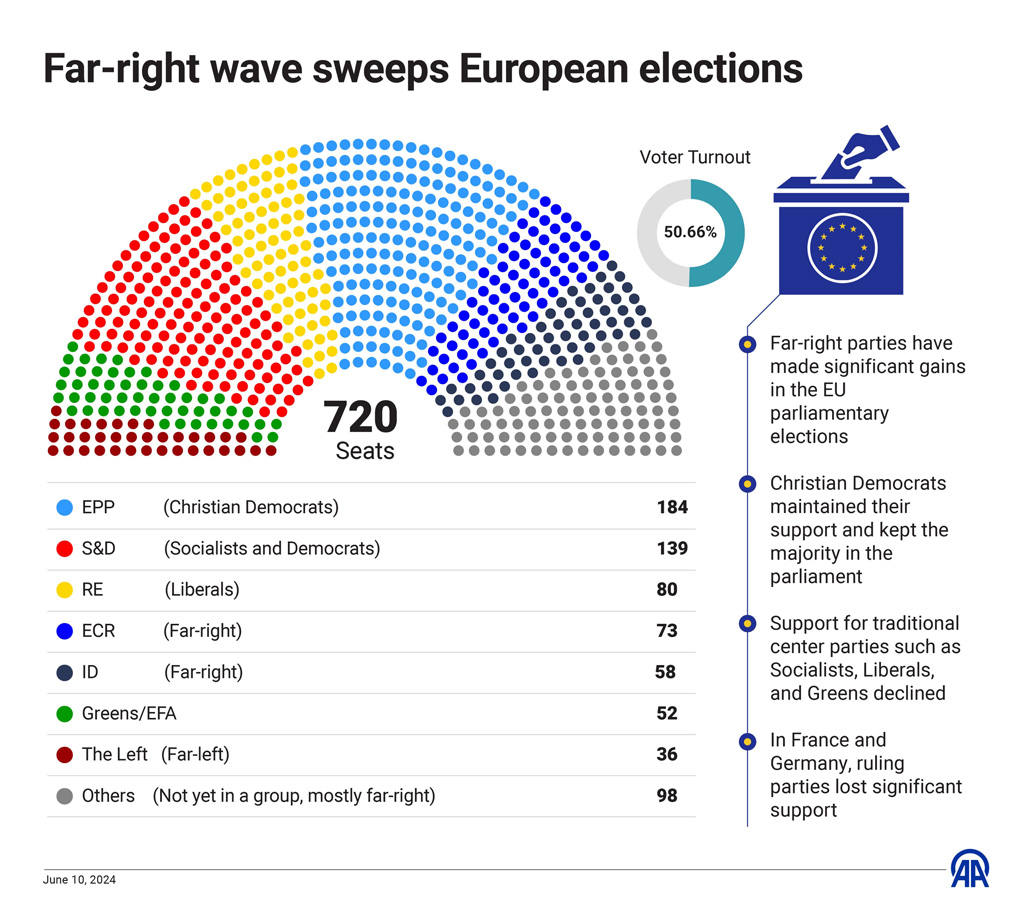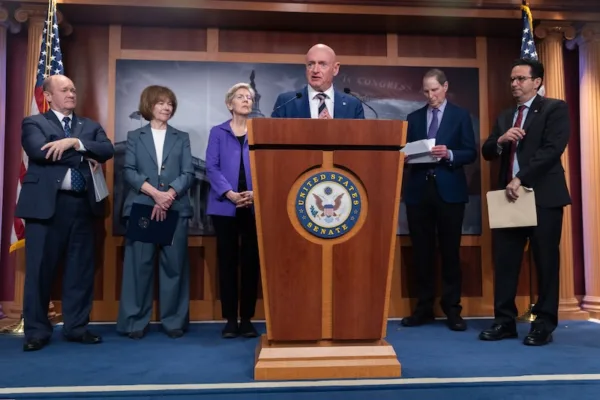The rise of the right in Europe and the US presidential elections

The European Parliament election results indicate a rise in support for center-right and far-right candidates. Pro-European Union groups, which hold the majority in the parliament, saw the biggest losses among liberals and greens. This shift suggests that Europe will inevitably lean more towards right-wing policies in the coming period. Ignoring the rise of the far-right and persisting with left and liberal policies will only strengthen the right, making a shift towards more right-leaning politics by the center inevitable. Similarly, in American politics, the political cost of left and liberal policies has been bolstering Trump, leading Biden to adopt more centrist and right-leaning policies as the elections approach. While these rightward shifts may provide short-term solutions, it is clear that without a comprehensive political agenda, they will be insufficient to curb the rise of the right.
Politics of Fear
French President Macron has successfully mobilized center and left groups against the far-right, using fear as a political tool. By calling for early elections, Macron hopes to replicate this success and marginalize the far-right once more. However, if this risky strategy fails, he may have to appoint a right-wing leader as Prime Minister. Such a scenario would confirm the rise of the right not only in European Parliament elections but also in national politics. Similarly, President Biden is focusing on mobilizing his coalition against Trump’s rise, but Trump has become more normalized in national politics since the 2016 elections. While fear of the far-right might work partially, it is clear that it cannot be the sole solution to counter the right’s rise.


Economic and Social Dynamics
The rise of the right in Europe can be attributed to specific regional factors, but similar trends are evident in American politics concerning inflation, immigration, and environmental issues. Efforts to revive the economy with generous spending policies post-pandemic have led to high inflation. The trillions injected into the economy were promised to result in significant transformations through infrastructure and green transition policies. However, these transformations have not materialized, and rising energy prices due to the Ukraine war have made inflation a persistent issue globally. The costs of transitioning to a green economy and increasing energy prices have sparked backlash against environmental policies in both America and Europe. President Biden, who initially supported major green transition policies, has now shifted focus, avoiding these topics to evade the political cost.
Immigration and Border Crisis
Immigration is perhaps the most significant factor in the rise of the right in Europe, with similar dynamics in America. Europe’s long-standing policies of free movement and liberal asylum have led to unmanageable migrant flows, especially from conflict zones in the Middle East. Europe attempted to manage the situation through agreements like the one with Turkey, but the rise of anti-immigrant groups continued. In America, the Biden administration, while attempting to reverse Trump’s anti-immigrant policies, faces a severe border crisis. The number of border crossings under Biden is more than four times higher than during Trump’s tenure, forcing Biden to sign an executive order limiting asylum claims. Biden’s strategy of ‘managing the day’ faces the dual risk of alienating his base while failing to satisfy those concerned about border security.
Return to Centrist Politics?
The themes emerging ahead of the American presidential elections mirror the dynamics behind the rise of the right in Europe, indicating that the November elections will have significant implications for the direction of Western politics. The same issues that brought Trump to power in 2016—economic dissatisfaction, anti-immigrant sentiment, and environmental policies—remain relevant today, underscoring the inadequacy of Biden’s strategic moves. Despite positive economic indicators, persistent high inflation, the border crisis, and the failure of environmental policies to address high energy prices make Trump more appealing to voters.
The rise of the right in European elections, despite the weakening of liberals, does not spell the end for centrism, which could be promising for Biden. However, playing to the center risks sacrificing the dynamism and support of more ideologically driven left and liberal groups. Biden, who has alienated younger voters on issues like Palestine, might find it challenging to mobilize them for the election. Attempting to compensate for this loss with centrist votes and leveraging fear of Trump might not suffice. In Europe, the right’s rise may erode rather than eliminate centrism, a scenario that could also apply to Biden’s America. Nevertheless, limited measures to appease the center will likely fall short in addressing voter concerns about inflation, the border crisis, and gas prices, issues that continue to benefit Trump.















